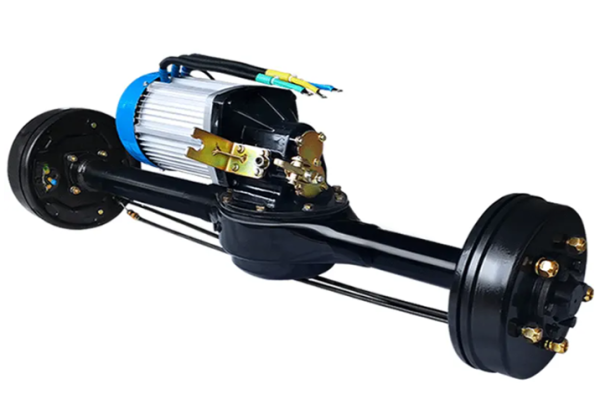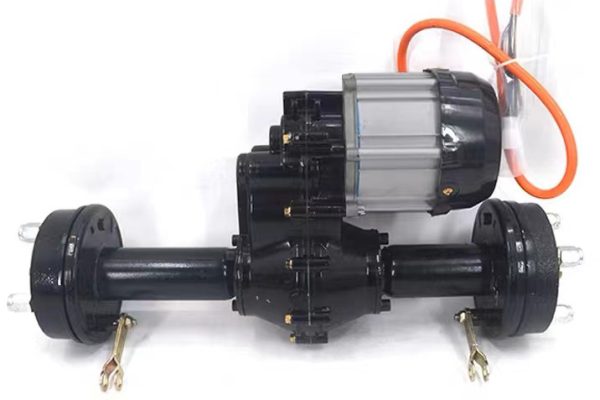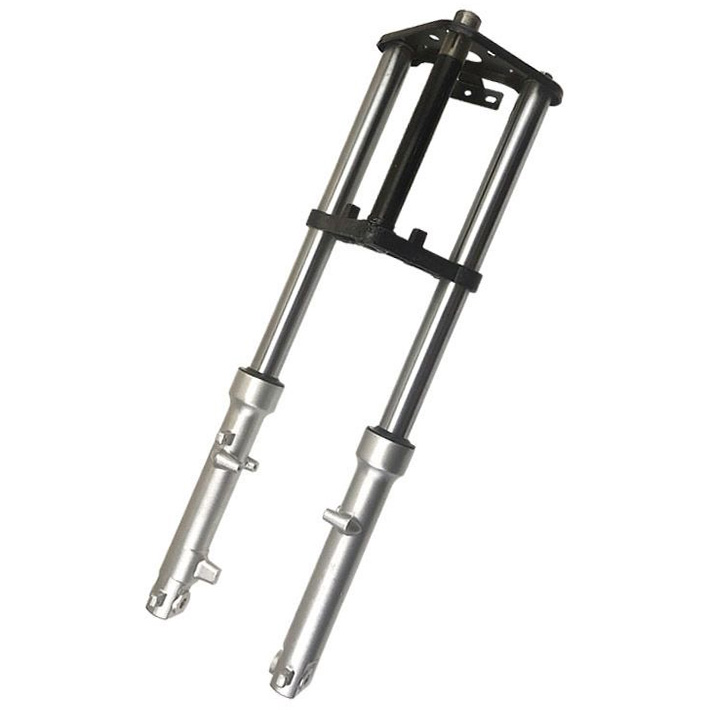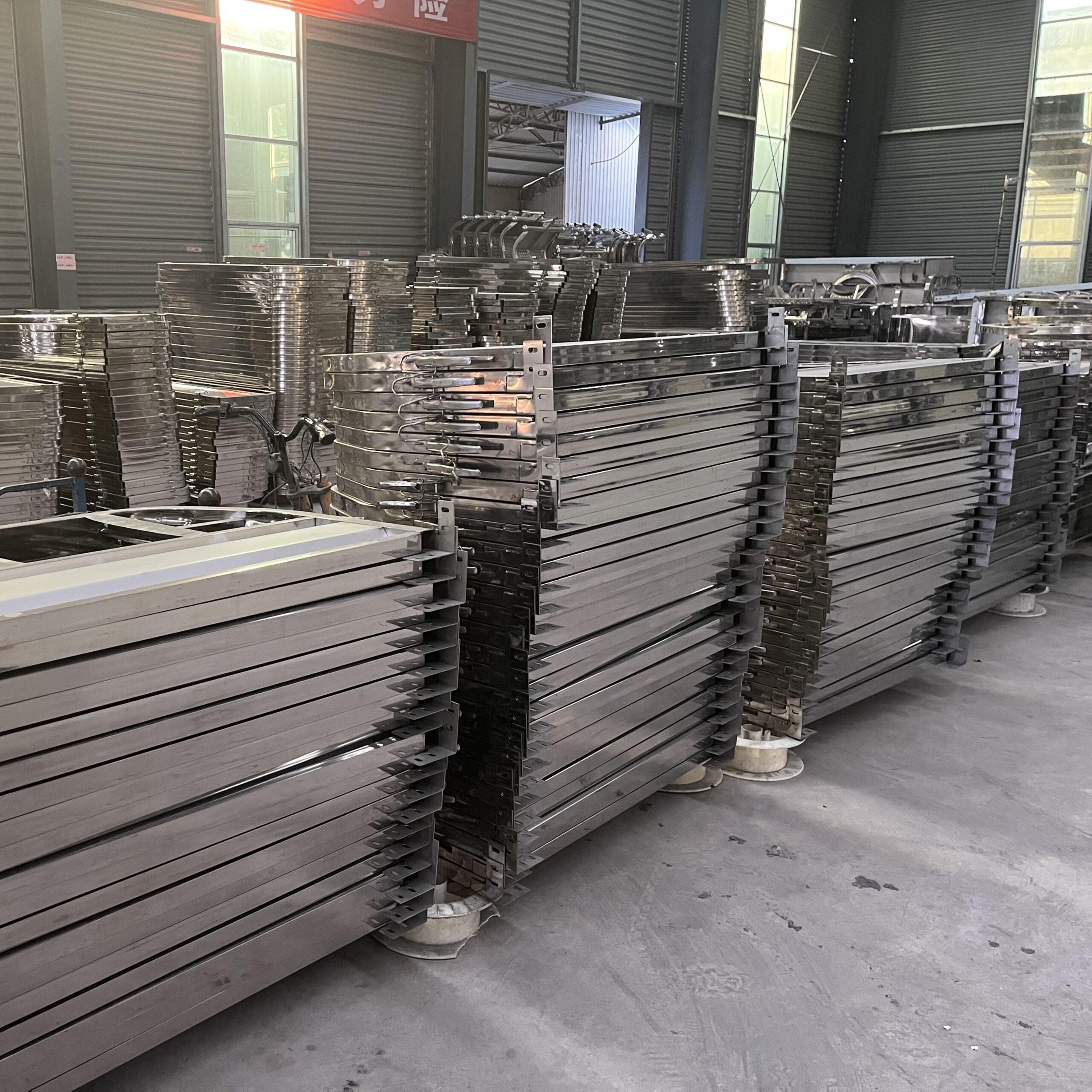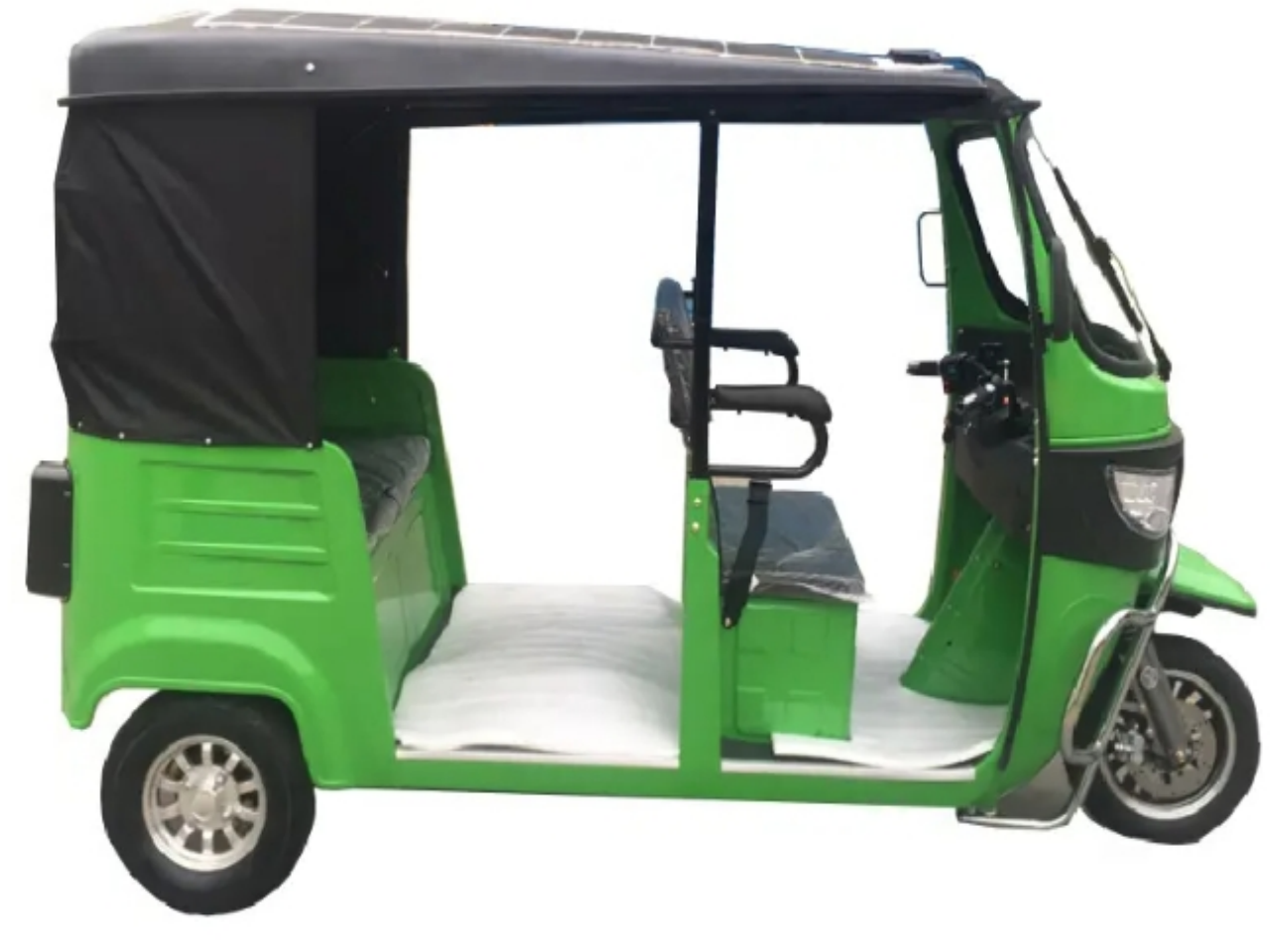
ของคุณ รถลากไฟฟ้า ผู้ผลิต
ยินดีต้อนรับสู่หน้าโดยเฉพาะสำหรับรถลากไฟฟ้า ในฐานะผู้ผลิตรถลากไฟฟ้าชั้นนำเราภูมิใจในการให้ความเข้าใจในเชิงลึกเกี่ยวกับโหมดการขนส่งที่ยั่งยืนนี้ ดำน้ำลึกลงไปในทรัพยากรของเราและค้นพบนวัตกรรมงานฝีมือและการอุทิศตนเบื้องหลังรถลากทุกตัวที่เราผลิต
สารบัญสำหรับหน้านี้
เพื่อให้แน่ใจว่าคุณสามารถค้นหาข้อมูลเกี่ยวกับ ทุกด้านของ tricycles ไฟฟ้า Richshaw คุณต้องการอย่างรวดเร็วเราได้เตรียมไดเรกทอรีเนื้อหานี้ซึ่งจะข้ามไปยังตำแหน่งที่สอดคล้องกันเมื่อคุณคลิกที่มัน
ระบบขับขี่: การเปิดเครื่อง รถสามล้อ E-Rickshaw
ระบบขับเคลื่อนเป็นโรงไฟฟ้าของรถสามล้อไฟฟ้า ระบบขับเคลื่อนที่ได้รับการออกแบบมาอย่างดีให้การถ่ายโอนพลังงานที่มีประสิทธิภาพทำให้มั่นใจได้ว่าประสิทธิภาพที่ดีที่สุดในภูมิประเทศและสภาพโหลดต่างๆ

รายละเอียดมอเตอร์
พลังและประเภท: ทางเลือกของพลังงานมอเตอร์และประเภทมีผลโดยตรงต่อประสิทธิภาพของรถสามล้อและประสิทธิภาพโดยรวม มอเตอร์ประเภททั่วไปที่ใช้ในสามล้อไฟฟ้าคือ:
- มอเตอร์แปรงแบบดั้งเดิม: คลาสสิกในการออกแบบและเป็นมิตรกับงบประมาณ แต่อาจต้องการการดูแลรักษามากขึ้นเนื่องจากประสิทธิภาพที่น้อยลงเมื่อเทียบกับสายพันธุ์ที่ไม่มีแปรง
- มอเตอร์ไร้แปรงที่ทันสมัย: พวกเขามีประสิทธิภาพที่เหนือกว่าและยาวนาน แรงบิดที่เพิ่มขึ้นของพวกเขาด้วยความเร็วต่ำทำให้พวกเขาเป็นตัวเลือกที่เหมาะสำหรับการขนส่งสินค้า ในปัจจุบันโรงงานของเราจะจัดทำยานพาหนะไฟฟ้าทั้งหมดด้วยมอเตอร์ไร้แปรงสำหรับเอาท์พุทภายใต้ 2000W
พารามิเตอร์สำคัญของมอเตอร์
แรงกระแทกพลังงานมอเตอร์: การเลือกพลังงานมอเตอร์และความหลากหลายของคุณมีบทบาทสำคัญในการกำหนดประสิทธิภาพและประสบการณ์การขับขี่โดยรวมของรถสามล้อ
| Power Rated (W) | สถานการณ์การใช้งานที่แนะนำ |
|---|---|
| 800W ถึง 1,000W |
การใช้งาน: เหมาะสำหรับรถลากไฟฟ้าขนาดเล็ก ความสามารถของมอเตอร์เหล่านี้อยู่ที่ระดับล่างสุดสำหรับรถสามล้อไฟฟ้าผู้โดยสาร พวกเขาไม่เหมาะสำหรับสถานการณ์การรับน้ำหนักผู้โดยสารขนาดใหญ่ทั่วไป แต่มีมากขึ้นสำหรับการใช้เวลาว่างที่บ้านหรือรถลากไฟฟ้าขนาดเล็กที่มีความหมายสำหรับระยะทางที่สั้นกว่า
สถานการณ์ที่แนะนำ: เหมาะสำหรับการโหลดที่เบากว่าเช่นการขนส่งรายบุคคลหรือกิจกรรมการพักผ่อนแบบเบา ๆ ภายในการตั้งค่าพื้นที่ใกล้เคียงหรือสวนสาธารณะ |
| 1,000W ถึง 1200W |
การใช้งาน: นี่เป็นช่วงที่พบได้บ่อยที่สุดสำหรับรถลากไฟฟ้าซึ่งมีความสมดุลระหว่างประสิทธิภาพและความสามารถในการจ่าย รถลากภายในช่วงวัตต์นี้สามารถรองรับผู้โดยสาร 4-5 คนได้อย่างสะดวกสบาย สถานการณ์ที่แนะนำ: ดีที่สุดสำหรับพื้นที่ในเมืองหรือชานเมืองที่มีภูมิประเทศปานกลาง ความแข็งแรงของมอเตอร์นี้สามารถจัดการโหลดผู้โดยสารปกติทำให้เป็นข้อกำหนดขั้นต่ำสำหรับการใช้งานเชิงพาณิชย์ทุกวัน |
| 1500W ถึง 2000W |
การใช้งาน: มอเตอร์เหล่านี้เป็นมอเตอร์ประสิทธิภาพสูงที่ออกแบบมาเพื่อรับมือกับภูมิประเทศที่ท้าทายและโหลดผู้โดยสารที่สูงขึ้น พวกเขาให้พลังเพิ่มเติมสำหรับการปีนขึ้นเขาและเส้นทางที่ขรุขระ สถานการณ์ที่แนะนำ: เหมาะสำหรับภูมิภาคหรือพื้นที่ที่มีภูมิประเทศที่ไม่สม่ำเสมอ เหมาะสำหรับเส้นทางที่วุ่นวายที่มีการไหลของผู้โดยสารอย่างต่อเนื่องทำให้มั่นใจได้ทั้งความเร็วและประสิทธิภาพ |
| 2000W ขึ้นไปมอเตอร์ |
การใช้งาน: จุดสุดยอดของพลังงานในรถลากไฟฟ้ามอเตอร์เหล่านี้ได้รับการออกแบบมาสำหรับโหลดผู้โดยสารที่หนักที่สุดและภูมิประเทศที่ยากที่สุด พวกเขาสามารถให้ความเร็วที่เร็วขึ้นทำให้พวกเขาเหมาะสำหรับเส้นทางที่ยาวขึ้น สถานการณ์ที่แนะนำ: เหมาะสำหรับการขนส่งโหลดผู้โดยสารสูงสุดในระยะทางไกล เป็นประโยชน์อย่างยิ่งในพื้นที่ที่มีภูมิประเทศที่ต้องการหรือสำหรับผู้ที่มองหาความเร็วที่สูงขึ้นโดยไม่ลดทอนการโหลด |
Torque (Nm) Defined: Torque represents the essential "force" propelling a vehicle into motion or assisting it uphill.
คิดว่าแรงบิดเป็นมอเตอร์ไฟฟ้า “ความแข็งแกร่ง,” สิ่งสำคัญเมื่อเริ่มต้นการเคลื่อนไหวในรถสามล้อไฟฟ้าหรือจัดการกับความท้าทายที่สูงขึ้น
ค่าแรงบิดที่มากขึ้นบ่งชี้ว่ารถสามล้อสามารถจัดการทางลาดชันและสินค้าขนาดใหญ่ได้โดยไม่ต้องใช้มอเตอร์มากเกินไป ลองนึกภาพว่ามีเพื่อนร่วมงานที่แข็งแกร่งช่วยในการผลักดันรถเข็นหนักขึ้นเขา สำหรับภูมิประเทศระดับแรงบิดเฉลี่ยทำงานได้ดี อย่างไรก็ตามหากเส้นทางของคุณมักจะเกี่ยวข้องกับเนินเขาหรือการขนส่งสิ่งของหนักมอเตอร์แรงบิดสูงจะเป็นสิ่งจำเป็นสำหรับประสิทธิภาพที่เหมาะสมและเหมาะสมที่สุด
แม้ว่ามอเตอร์สองตัวจะมีพลังที่เหมือนกันแรงบิดของพวกเขาอาจแตกต่างกันนำไปสู่การเปลี่ยนแปลงของประสิทธิภาพของรถสามล้อไฟฟ้า
โดยทั่วไปแล้วมอเตอร์ที่ใหญ่กว่าหมายถึงวัตต์มากขึ้นและเพิ่มแรงบิด ในขณะที่การเลือกมอเตอร์ 800W ถึง 1000W อาจไม่ได้มีช่องว่างราคาที่น่าสังเกต แต่ก็มีความแตกต่างของน้ำหนักและขนาด มอเตอร์ที่มีขนาดมากขึ้นเช่น 1000W ทำงานได้อย่างแข็งแกร่งยิ่งขึ้นโดยเฉพาะอย่างยิ่งในสภาพถนนที่ท้าทาย
ความเร็ว (รอบต่อนาที): ความเร็วในการหมุนตั้งค่าความเร็วสูงสุดของสามล้อ
แม้ว่าโดยทั่วไปแล้วรอบต่อนาทีที่สูงขึ้นจะเท่ากับความเร็วสูงสุดที่เร็วกว่าสำหรับสามล้อไฟฟ้า
เลือก AGL และเราจะแนะนำคุณในการเลือกพลังงานและประเภทมอเตอร์ที่ซับซ้อนเพื่อให้มั่นใจว่ายานพาหนะของคุณจะได้รับประสิทธิภาพและประสิทธิภาพที่เหมาะสมที่สุด

รายละเอียดคอนโทรลเลอร์
ทำหน้าที่เป็นศูนย์บัญชาการของระบบขับเคลื่อนคอนโทรลเลอร์จะปรับเปลี่ยนกระแสไฟฟ้าให้กับมอเตอร์ตามพรอมต์ของคันเร่ง ความสำคัญของมันขยายไปสู่การควบคุมการเร่งความเร็วและความเร็วสูงสุด
ฟังก์ชั่นการป้องกัน: สิ่งเหล่านี้รวมถึงการป้องกันต่อกระแสไฟฟ้าที่มากเกินไปการไม่ทำงานและความร้อนสูงเกินไป
พารามิเตอร์สำคัญของคอนโทรลเลอร์
เมื่อเลือกคอนโทรลเลอร์ให้แน่ใจว่ามันสอดคล้องกับประเภทมอเตอร์มีความสำคัญ ตัวอย่างเช่นมอเตอร์คลื่นไซน์ต้องการตัวควบคุมคลื่นไซน์ที่ตรงกัน
กระแสสูงสุด (a): ระบุพลังงานสูงสุดที่คอนโทรลเลอร์สามารถส่งไปยังมอเตอร์
ความเข้ากันได้ของแรงดันไฟฟ้า (V): ควรซิงค์กับแรงดันไฟฟ้าของแบตเตอรี่
จัดหมวดหมู่ด้วยแรงดันไฟฟ้า: ตัวเลือกรวมถึง 36V, 48V, 60V, 72V ฯลฯ โดย 60V เป็นตัวเลือกที่โดดเด่น
จำแนกตามจำนวนทรานซิสเตอร์พลังงาน: มี 15, 17, 18, 24, 36, ฯลฯ ตัวเลขที่แตกต่างกัน ยิ่งมีจำนวนทรานซิสเตอร์พลังงานมากเท่าใดก็ยิ่งมีกำลังมอเตอร์ที่ตรงกันมากขึ้นซึ่งนำไปสู่กำลังขับที่แข็งแกร่งราคาที่สูงขึ้นและการใช้พลังงานที่มากขึ้น
- 18 & 24 ทรานซิสเตอร์: ใช้กันทั่วไปในรถตุ๊กตุ๊กไฟฟ้าจำนวนมากตัวควบคุมเหล่านี้ให้ความสมดุลระหว่างความเร็วประสิทธิภาพและประสิทธิภาพ
- 36 ทรานซิสเตอร์: เหมาะที่สุดสำหรับรถตุ๊กตุ๊กไฟฟ้าที่มีกำลังมอเตอร์ที่สูงขึ้นตัวควบคุมเหล่านี้ให้ประสิทธิภาพระดับสูงสุดแม้ว่าพวกเขาจะมีราคาแพงกว่าและใช้พลังงานมากขึ้น
การเลือกคอนโทรลเลอร์ที่มีข้อกำหนดที่เหมาะสมเราสามารถมั่นใจได้ว่ามอเตอร์จะได้รับกระแสที่ถูกต้องเพิ่มประสิทธิภาพการเร่งความเร็วและความเร็วสูงสุดของรถลากไฟฟ้า

ทางเลือกของเพลาล้อหลัง
เพลาล้อหลังมีความสำคัญต่อประสิทธิภาพของผู้โดยสารรถสามล้อ มันให้ความมั่นคงและความสมดุลทำให้มั่นใจได้ว่าการขี่ที่ราบรื่นและมั่นคงในภูมิประเทศที่หลากหลาย การเลือกเพลาล้อหลังที่มีคุณภาพจะช่วยให้ความน่าเชื่อถือของรถสามล้อไฟฟ้าของคุณมีความน่าเชื่อถือทำให้การเดินทางแต่ละครั้งปลอดภัยและน่ารื่นรมย์ การเลือกของคุณรับประกันได้ว่าการเดินทางทุกครั้งนั้นเป็นการผสมผสานของประสิทธิภาพและความปลอดภัย
ฟังก์ชั่นการป้องกัน: เพลาล้อหลังเป็นสิ่งจำเป็นสำหรับความสมดุลและความมั่นคง
เพลาล้อหลังแบบบูรณาการ (พร้อมความแตกต่าง)
ข้อดี:
- ความแข็งแรงและความทนทาน: ออกแบบมาเพื่อรองรับการโหลดที่หนักกว่าทำให้เหมาะสำหรับสามล้อไฟฟ้าผู้โดยสารที่ต้องการความสามารถในการรับน้ำหนักอย่างมาก
- ความน่าเชื่อถือ: ชิ้นส่วนที่เชื่อมต่อน้อยลงแปลเพื่อเพิ่มความทนทานและโอกาสการสลายน้อยลง
- ประสิทธิภาพ: การออกแบบที่ง่ายขึ้นหมายถึงการติดตั้งที่เร็วและง่ายขึ้นเป็นประโยชน์สำหรับการผลิตและการซ่อมแซมขนาดใหญ่
ข้อเสีย:
- ความซับซ้อนในการบำรุงรักษา: หากส่วนประกอบเช่นความต้องการความต้องการที่แตกต่างกันการจัดการกับหน่วยเพลาทั้งหมดอาจจำเป็น
- ขนาด: เพลารวมที่มีขนาดใหญ่กว่าอาจจะเหมาะกับรถสามล้อไฟฟ้าขนาดเล็ก 2-3 คัน
- ค่าใช้จ่าย: โดยทั่วไปมันมีแนวโน้มที่จะมีราคาแพงกว่าเพลาหลังที่แบ่งเป็นส่วน
จากความต้องการของตลาดรถสามล้อไฟฟ้าเพลาล้อหลังแบบบูรณาการเป็นตัวเลือกยอดนิยมเนื่องจากความแข็งแรงและประสิทธิภาพโดยเฉพาะอย่างยิ่งสำหรับยานพาหนะที่ออกแบบมาเพื่อบรรทุกผู้โดยสารหลายคน
เพลาล้อหลังแบบแบ่งส่วน (มีความแตกต่าง)
ข้อดี:
- ง่ายต่อการบำรุงรักษา: การออกแบบแบบแยกส่วนทำให้มั่นใจได้ว่าสามารถเปลี่ยนชิ้นส่วนที่เสียหายเฉพาะได้โดยไม่จำเป็นต้องเปลี่ยนระบบทั้งหมด
- ราคาประหยัด: โดยทั่วไปจะมีราคาไม่แพงและโดดเด่นระหว่างคุณภาพและความสามารถในการจ่าย
- ความยืดหยุ่น: เหมาะสำหรับรถสามล้อขนาดเล็กผู้โดยสารที่ออกแบบมาสำหรับผู้โดยสาร 2-3 คนซึ่งมีความสามารถในการรับน้ำหนักที่มีประสิทธิภาพสำหรับยานพาหนะดังกล่าว
ข้อเสีย:
- การบำรุงรักษาตามปกติ: ลักษณะที่แบ่งส่วนของมันอาจทำให้การตรวจสอบและการบำรุงรักษาบ่อยขึ้นเพื่อให้แน่ใจว่าประสิทธิภาพที่ราบรื่น
- ข้อ จำกัด ในการโหลด: ในขณะที่มีประสิทธิภาพสำหรับยานพาหนะขนาดเล็กอาจไม่ใช่ตัวเลือกที่ดีที่สุดสำหรับรถสามล้อไฟฟ้าขนาดใหญ่ที่มีความจุผู้โดยสารสูงขึ้น
เพลาล้อหลังที่แบ่งเป็นส่วนเนื่องจากความยืดหยุ่นและความคุ้มค่าเป็นทางเลือกที่ทำงานได้สำหรับรถสามล้อไฟฟ้าขนาดเล็กโดยเฉพาะอย่างยิ่งที่ออกแบบมาสำหรับการเดินทางระยะสั้นที่มีผู้โดยสารน้อยลง
ที่ Agl-Trike เราจัดลำดับความสำคัญของลูกค้าของเรา’ ความต้องการเฉพาะที่นำเสนอการกำหนดค่าเพลาหลังที่คุ้มค่าที่สุดเพื่อให้แน่ใจว่าการใช้งานและประสิทธิภาพของรถสามล้อที่ดีที่สุดตลอดวงจรชีวิตของพวกเขา

พารามิเตอร์สำคัญของเพลาล้อหลัง:
ซึ่งตั้งอยู่ใจกลางในเพลาล้อหลังกล่องเกียร์ทำหน้าที่เป็นตัวเชื่อมต่อที่สำคัญสำหรับล้อและสะพานไปยังมอเตอร์ เป็นเครื่องมือในการขับขี่และส่งสัญญาณ
หัวใจของกระปุกเกียร์นี้เป็นความแตกต่าง ใช้พลังงานจากมอเตอร์โดยใช้เกียร์และกระจายไปยังครึ่งแกนเพื่อให้ความเร็วของล้อแตกต่างกัน กลไกนี้ช่วยให้มั่นใจได้ว่ารถสามล้อเพื่อการพักผ่อนจะเปลี่ยนไปอย่างราบรื่นและรักษาสมดุล อัตราส่วนเกียร์ภายในของความแตกต่างเป็นปัจจัยกำหนดของแรงขับเริ่มต้นของรถสามล้อความเร็วสูงสุดและประสิทธิภาพ
การส่งแรงบิดที่เหนือกว่าของ Differential และความสามารถในการจัดการงานและโหลดขึ้นเนินทำให้เป็นสิ่งที่ขาดไม่ได้ในการพักผ่อนเพื่อยกระดับประสบการณ์รถสามล้อโดยรวม
อัตราส่วนเกียร์:
ภาพเน้นการทำงานภายในของ แตกต่างกันแสดงอัตราส่วนฟันเกียร์ระหว่าง เกียร์ไดรฟ์ (เชื่อมต่อกับมอเตอร์) และ เกียร์ขับเคลื่อน (เกี่ยวข้องกับล้อ).
ตัวอย่างเช่น:
- อัตราส่วนเกียร์ 3: 1 บ่งชี้ว่าสำหรับทุก 3 การหมุนของเฟืองไดรฟ์ (เชื่อมต่อกับมอเตอร์) เกียร์ขับเคลื่อน (เชื่อมโยงกับล้อ) จะเปลี่ยนหนึ่งครั้งนำไปสู่ความเร็วที่เร็วขึ้น แต่ลดความสามารถในการลากลดลง
- อัตราส่วน 5: 1 หมายถึงว่าเกียร์ไดรฟ์จะต้องทำ 5 สปินสำหรับเกียร์ที่ขับเคลื่อนเพื่อการหมุนครั้งเดียวทำให้ความเร็วช้าลง แต่เพิ่มแรงบิด
พิจารณาสองสามล้อไฟฟ้า: ทั้งคู่มีข้อกำหนดของมอเตอร์ที่เหมือนกัน แต่อัตราส่วนต่างที่แตกต่างกัน ครั้งแรกมีอัตราส่วน 31:10 ในขณะที่ที่สองมีอัตราส่วน 35:14 รถสามล้อครั้งที่สองบรรลุความเร็วเกินกว่าครั้งแรกอย่างน้อย 10 กม./ชม. แต่เสียสละในแง่ของความสามารถในการรับน้ำหนัก
ในการถอดรหัสหากรถสามล้อจัดลำดับความสำคัญของพลังงานมากกว่าความเร็วจากอัตราส่วนที่แตกต่างกัน: อัตราส่วนที่ต่ำกว่าแนะนำการออกแบบที่เน้นความเร็วเป็นศูนย์กลางในขณะที่อัตราส่วนที่สูงขึ้นแสดงถึงการมุ่งเน้นไปที่ความแข็งแรงและพลังงาน


กระปุกเกียร์มาตรฐานกับเกียร์ความเร็วตัวแปร:
การควบคุมความสามารถของกล่องเกียร์ความเร็วตัวแปร (ขนานนามความแตกต่างความเร็วสูงต่ำ)สามล้อของเรารวมเข้าด้วยกัน ส้อมเปลี่ยนเกียร์ที่เป็นเอกลักษณ์- สิ่งนี้อนุญาตให้สลับระหว่าง การตั้งค่าสูงและความเร็วต่ำสร้างความมั่นใจว่าการปรับตัวที่ราบรื่นเมื่อย้ายจากภูมิประเทศแบนไปสู่ภูมิประเทศที่ท้าทายซึ่งต้องการแรงบิดและพลังเพิ่ม ความแตกต่างระหว่างสองโหมดนี้สามารถสังเกตได้อย่างชัดเจนในภาพที่ให้ไว้
สถานการณ์ที่เกี่ยวข้อง:
- โหมดความเร็วสูง: เหมาะสำหรับพื้นผิวเรียบและถนนมาตรฐานโหมดนี้ช่วยลดความต้านทานเพิ่มความเร็วของรถสามล้อสูงสุดในขณะที่เน้นประสิทธิภาพการใช้พลังงานไม่ว่าจะเป็นเชื้อเพลิงหรือพลังงานแบตเตอรี่
- โหมดความเร็วต่ำ: กำหนดเองสำหรับสภาพแวดล้อมที่เข้มงวด-คิดว่าเอียงหรือช่วงเวลาที่สูงชันเมื่อขนส่งน้ำหนักที่สำคัญ การตั้งค่านี้ช่วยเพิ่มแรงบิดและพลังงานของสามล้อรักษาจังหวะที่สอดคล้องกันและหลีกเลี่ยงความเครียดที่ไม่จำเป็นบนมอเตอร์
คุณสมบัติ Hill-Assist (ไม่บังคับ):
กระปุกเกียร์ที่เป็นนวัตกรรมของเราซึ่งมักเรียกว่าการส่งผ่านความเร็วสูงต่ำมาพร้อมกับคันเกียร์แบบกะพิเศษ คันโยกนี้ทำให้เป็นเรื่องง่ายสำหรับผู้ขับขี่ที่จะเปลี่ยนไปใช้ความเร็วต่ำในระหว่างการเดินทางขึ้นเนินและกลับไปเป็นความเร็วที่สูงขึ้นในระดับระดับ เป็นฟังก์ชั่นการยึดครองเนินเขาโดยเฉพาะของเราที่ออกแบบมาเพื่อปรับให้เข้ากับสภาพการขับขี่ที่หลากหลายและสามารถปรับให้เหมาะสมกับข้อกำหนดที่แตกต่างกัน
ข้อควรพิจารณาอื่น ๆ ในกระปุกเกียร์เพื่อความทนทานและพลังงานที่ดีที่สุด
ความหนาของผนังของกล่องเกียร์วัสดุที่ใช้และกระบวนการผลิตของเกียร์เองเป็นองค์ประกอบสำคัญทั้งหมด ยิ่งไปกว่านั้นโมดูลัสของเกียร์นั้นมีความสำคัญเนื่องจากสามารถส่งผลกระทบโดยตรงต่อการส่งพลังงานและความทนทานของยานพาหนะทั้งหมด
ที่ศูนย์การผลิตของเราการออกแบบและการประกอบกล่องเกียร์ของเราเน้นความเป็นเลิศและความทนทานสำหรับรถสามล้อไฟฟ้าของเรา กระบวนการอย่างละเอียดของเราทำให้มั่นใจได้ว่าการเปลี่ยนพลังงานอย่างราบรื่นจากมอเตอร์เป็นล้อทำให้คุณมั่นใจได้ถึงประสิทธิภาพที่ยอดเยี่ยมและอายุการใช้งานที่ยั่งยืนของยานพาหนะ
สิ่งจำเป็นสำหรับแบตเตอรี่ สำหรับ e-rickshaw tricycles
เมื่อเลือกรถสามล้อไฟฟ้าเพื่อการพักผ่อนความอดทนของแบตเตอรี่เป็นสิ่งสำคัญยิ่ง ตรวจสอบให้แน่ใจว่าแบตเตอรี่ที่ไม่เพียง แต่ให้ช่วงขยาย แต่ยังสัญญาว่าจะมีอายุการใช้งานยาวนานสำหรับการผจญภัยมากมายในอนาคต
ลิเธียม-ไอออนเทียบกับตะกั่วกรด: การเปรียบเทียบ
| พารามิเตอร์/แรงดันไฟฟ้า | แบตเตอรี่ลิเธียมไอออน | แบตเตอรี่ตะกั่วกรด |
|---|---|---|
| ราคาซื้อ | ต้นทุนการลงทุนเริ่มต้นที่สูงขึ้น | โดยทั่วไปราคาไม่แพงมาก แต่อาจต้องใช้แทนบ่อยขึ้น |
| ความปลอดภัยและความมั่นคง | อาจมีความผันผวนมากขึ้นภายใต้เงื่อนไขเช่นการชาร์จมากเกินไป แต่มักจะมาพร้อมกับระบบการจัดการแบตเตอรี่ขั้นสูง (BMS) เพื่อการป้องกัน | มั่นคงมากขึ้น |
| น้ำหนัก/ขนาด | เบาและหนาแน่นมากขึ้นทำให้เหมาะสำหรับการใช้งานแบบพกพา | เมื่อเทียบกับแบตเตอรี่ลิเธียมที่มีความจุเท่ากันมันมีปริมาณมากขึ้นและหนักกว่า |
| อายุขัย | โดยทั่วไปมีอายุการใช้งานที่ยาวนานขึ้นด้วยจำนวนรอบการจ่ายประจุที่สูงขึ้น | อายุการใช้งานที่สั้นลงและลดลงเร็วขึ้นหลังจากผ่านไปหลายรอบ |
| ความเร็วในการชาร์จ | ความสามารถในการชาร์จที่เร็วขึ้น | เวลาชาร์จช้าลง |
| ช่วงและประสิทธิภาพในสภาพอากาศเย็น | รักษาประสิทธิภาพที่เหมาะสมในอุณหภูมิเย็น แต่ช่วงอาจลดลงเล็กน้อย | ไวต่อการลดลงของสภาพอากาศที่เย็นลงส่งผลให้ช่วงลดลง |
ทั้งแบตเตอรี่ตะกั่วกรดและลิเธียมมักใช้ในการแข่งขัน e-trikes ผู้โดยสาร ทางเลือกของคุณสามารถขึ้นอยู่กับงบประมาณของคุณ
ความจุแบตเตอรี่เลือก
| พารามิเตอร์/แรงดันไฟฟ้า | 48V | 60V | 72V |
|---|---|---|---|
| ปริมาณแบตเตอรี่ | 4 แบตเตอรี่ | 5 แบตเตอรี่ | 6 แบตเตอรี่ |
| ความสามารถร่วมกัน | 32H, 45AH | 45AH, 52AH, 58AH | 45AH, 52AH, 58AH, 60AH, 100AH.ETC |
| แนะนำพลังงานมอเตอร์ | ต่ำกว่า 1,000W | 1000W-2000W | สูงกว่า 2000W |
| สถานการณ์ที่เกี่ยวข้อง |
ความเหมาะสม: ดีที่สุดสำหรับรุ่นขนาดกะทัดรัดที่ออกแบบมาสำหรับระยะทางสั้น ๆ หรือโหลดผู้โดยสารที่มีน้ำหนักเบา การแสดง: ไม่ทรงพลังอาจต่อสู้กับความลาดชันที่สูงชันหรือภูมิประเทศที่ท้าทาย ราคา: โดยทั่วไปราคาไม่แพงมากขึ้นเนื่องจากโครงสร้างพื้นฐานพลังงานที่ต้องการน้อยลง |
ความเหมาะสม: ตัวเลือกอเนกประสงค์ที่ติดตั้งขนาด e-rickshaw หลากหลายตั้งแต่ขนาดกลางถึงขนาดใหญ่ ประสิทธิภาพ: เสนอโปรไฟล์พลังงานที่สมดุลทำให้สามารถปรับให้เข้ากับมอเตอร์ทั้งสูงและต่ำ ความสามารถในการจัดการความโน้มเอียงในระดับปานกลางและภูมิประเทศที่หลากหลาย ราคา: ราคาปานกลางสะท้อนตำแหน่งกลางในแง่ของประสิทธิภาพและความสามารถ |
ความเหมาะสม: เหมาะสำหรับรุ่นขนาดใหญ่ที่ต้องการพลังงานที่สำคัญโดยเฉพาะในระยะทางไกลหรือเส้นทางที่ท้าทาย ประสิทธิภาพ: แข็งแกร่งและทรงพลังออกแบบมาให้เก่งในสภาพที่ยากลำบาก เมื่อจับคู่กับแบตเตอรี่ความจุขนาดใหญ่ (เช่น 100AH) ตรวจสอบให้แน่ใจว่ารุ่นมีพื้นที่ว่างเพื่อรองรับ ราคา: มีแนวโน้มที่จะอยู่ด้านที่มีราคาแพงเนื่องจากพลังงานที่เหนือกว่าและศักยภาพในการจัดเก็บแบตเตอรี่ที่เพิ่มขึ้น |
| ระยะการล่องเรือ | 40-50 กิโลเมตร | 55-70 กิโลเมตร | 70-140 กิโลเมตร |
การประมาณระยะทางที่ให้ไว้ในตารางจะขึ้นอยู่กับเงื่อนไขที่ไม่ได้ใช้งาน (ว่างเปล่า) ช่วงที่เกิดขึ้นจริงอาจแตกต่างกันไปขึ้นอยู่กับแบบจำลองเฉพาะที่เลือกความเร็วการขี่ขนาดมอเตอร์และปัจจัยอื่น ๆ โปรดพิจารณาตัวเลขเหล่านี้เป็นการประมาณทั่วไปและปรึกษากับเราสำหรับการประเมินที่แม่นยำยิ่งขึ้นตามความต้องการเฉพาะของคุณ
พารามิเตอร์สำคัญอื่น ๆ เกี่ยวกับแบตเตอรี่
- ชื่อเสียง: แบรนด์ชั้นนำมีความหมายเหมือนกันกับความน่าเชื่อถือและคุณภาพที่เหนือกว่าได้รับการประเมินคุณภาพอย่างเข้มงวดและพิสูจน์ตัวเองในตลาด
- วันที่ผลิต: เลือกใช้แบตเตอรี่ที่ใหม่กว่าเนื่องจากมีแนวโน้มที่จะให้ความทนทานและความมั่นคงที่เพิ่มขึ้น
- มาตรการความปลอดภัย: ยืนยันว่าแบตเตอรี่มีกลไกความปลอดภัยที่จำเป็นเช่นการป้องกันการชาร์จมากเกินไปการชำระเงินมากเกินไปและการลัดวงจร
- การจัดวางแบตเตอรี่และยกระดับ: องค์ประกอบเหล่านี้มีผลต่อความสมดุลของสามล้อ เพื่อความปลอดภัยและความสมดุลที่ดีที่สุดแบตเตอรี่ควรสอดคล้องกับการออกแบบของยานพาหนะอย่างกลมกลืน
การเลือกแบตเตอรี่อัจฉริยะ: การเลือกใช้แรงดันไฟฟ้าและความจุที่มากขึ้นไม่ใช่วิธีที่ดีที่สุดในการเลือกแบตเตอรี่ ด้วย AGL เคียงข้างคุณเราจะช่วยปรับปรุงกระบวนการเพื่อค้นหาการกำหนดค่าแบตเตอรี่ที่สอดคล้องกับความต้องการในทางปฏิบัติของกลุ่มเป้าหมายของรถสามล้อไฟฟ้าของคุณ ด้วยการจัดแนวความแข็งแกร่งของมอเตอร์ที่ถูกต้องและข้อกำหนดของผู้ใช้เราไม่เพียง แต่เพิ่มประสิทธิภาพของรถสามล้อ แต่ยังตรวจสอบให้แน่ใจว่าค่าใช้จ่ายทางการเงินของคุณจ่ายออกโดยเน้นการลงทุนที่สูงขึ้น
ระบบช่วงล่าง สำหรับรถลากอิฐไฟฟ้า
การจำแนกประเภทของระบบกันสะเทือนด้านหน้า
โช้คอัพช็อตส้อม
สำหรับรถสามล้อโดยเฉพาะอย่างยิ่งที่กำหนดไว้สำหรับการขนส่งสินค้าหรือวัตถุประสงค์ทางการเกษตรระบบช่วงล่างนี้โดดเด่นเป็นตัวเลือกชั้นนำสำหรับการดูดซับแรงกระแทกด้านหน้า มีการออกแบบที่ตรงไปตรงมาให้ความทนทานและมาในราคาที่เหมาะสมกว่า
วัสดุ: ส่วนใหญ่สร้างจากวัสดุเช่นเหล็กหรือโลหะผสมอลูมิเนียม
ตัวแปร: ตัวเลือกรวมถึงส้อมด้านหน้าที่ดูดซับแรงกระแทกแบบสปริงส้อมดองดอลลิคหรือไฮบริดที่ผสานทั้งองค์ประกอบสปริงและไฮดรอลิกแดมเปอร์

ทำงานร่วมกับเราและเราจะช่วยคุณเลือกส้อมที่ถูกต้องตามสถานการณ์จริงของตลาดของคุณรวมถึงรายละเอียดต่อไปนี้:
คุณภาพวัสดุ: เลือกส้อมด้านหน้าที่ทำจากวัสดุคุณภาพสูงเช่นเหล็กกล้าความแข็งแรงสูงหรืออลูมิเนียม สิ่งนี้ทำให้มั่นใจได้ถึงความทนทานและความสามารถในการรับน้ำหนักของส้อมด้านหน้า
การออกแบบและการก่อสร้าง: เลือกส้อมด้านหน้าที่มีการออกแบบโครงสร้างเสริมเช่นแขนส้อมหนาหรือจุดเชื่อมที่เพิ่มขึ้นเพื่อลดความเสี่ยงของการดัดและการเสียรูป
การเดินทางและการบีบอัด: พิจารณาการเดินทางที่ใหญ่ขึ้น - การวัดระยะห่างระหว่างการบีบอัดและการขยายของโช้คอัพช็อต การเดินทางที่ใหญ่ขึ้นสามารถดูดซับการเปลี่ยนแปลงอย่างฉับพลันในภูมิประเทศ
ความสามารถในการทำให้หมาด ๆ: ระบบการทำให้หมาด ๆ ไฮดรอลิกที่ดีสามารถควบคุมการเคลื่อนไหวของส้อมด้านหน้าได้ดีขึ้นในภูมิประเทศที่ซับซ้อนซึ่งให้ประสบการณ์การขี่ที่ราบรื่น
ความสามารถในการปรับได้: Front Forks ที่ปรับได้อนุญาตให้ปรับแต่งได้อย่างละเอียดตามภาระและภูมิประเทศเช่นสปริงโหลดการบีบอัดและความเร็วในการตอบสนอง
ความเข้ากันได้กับยานพาหนะ: ตรวจสอบให้แน่ใจว่าส้อมด้านหน้าเข้ากันได้กับส่วนอื่น ๆ ของรถสามล้อโดยเฉพาะขนาดยางและระบบเบรก
การจำแนกประเภทของระบบช่วงล่างด้านหลัง
ระบบกันสะเทือนด้านหลังมีบทบาทสำคัญในการสร้างความมั่นใจว่าการขับขี่ที่มั่นคงราบรื่นและปลอดภัยโดยเฉพาะอย่างยิ่งเมื่อโหลดและขนถ่ายสินค้าหรือข้ามภูมิประเทศที่ไม่สม่ำเสมอ ด้านล่างนี้เป็นองค์ประกอบสำคัญและข้อควรพิจารณา
ใบสปริง
- ความทนทานและความมั่นคง: โครงสร้างสปริงของใบไม้นั้นง่ายเสถียรและทนทานโดยเฉพาะอย่างยิ่งเหมาะสำหรับการโหลดหนักและการใช้งานในระยะยาวดังนั้นจึงมักใช้ในการขนส่งสินค้า ประกอบด้วยแถบเหล็กหลายเส้นที่สามารถโค้งงอและกระจายโหลดในช่วงขนาดใหญ่
- พารามิเตอร์สำคัญ: จำนวนความหนาและคุณภาพของวัสดุของใบไม้สปริง โดยทั่วไปแล้วน้ำพุของใบไม้ที่หนาขึ้นหรือหนาขึ้นหมายถึงการแขวนลอยสามารถรับภาระได้มากขึ้น
- การซ่อมบำรุง: LEAF Springs ต้องการการบำรุงรักษาน้อยที่สุดและค่าบำรุงรักษาค่อนข้างต่ำ

เครื่องดูดซับ Spirng /spring shock-absorber และ damper ไฮดรอลิก
เปรียบเทียบกับสปริงใบไม้: มอบประสบการณ์การขับขี่ที่นุ่มนวลและสะดวกสบายกว่าเมื่อเทียบกับ LEAF Springs แต่อาจไม่ทนทานภายใต้ภาระหนัก
- พารามิเตอร์สำคัญ-
- อัตราฤดูใบไม้ผลิ: (อัตราสปริงสูงหมายถึงสปริงแข็งและใช้แรงมากขึ้นในการบีบอัดสปริงในขณะที่อัตราสปริงต่ำหมายถึงฤดูใบไม้ผลิที่นุ่มนวลขึ้น)
- วัสดุ: (วัสดุของฤดูใบไม้ผลิมีผลต่อประสิทธิภาพความทนทานและน้ำหนัก)
- เส้นผ่าศูนย์กลาง: (ส่งผลกระทบต่อประสิทธิภาพและความสามารถในการรับน้ำหนักเส้นผ่านศูนย์กลางขนาดใหญ่สปริงขนาดใหญ่อาจสามารถรับน้ำหนักได้มากขึ้น แต่อาจหนักขึ้นและใช้พื้นที่มากขึ้น)
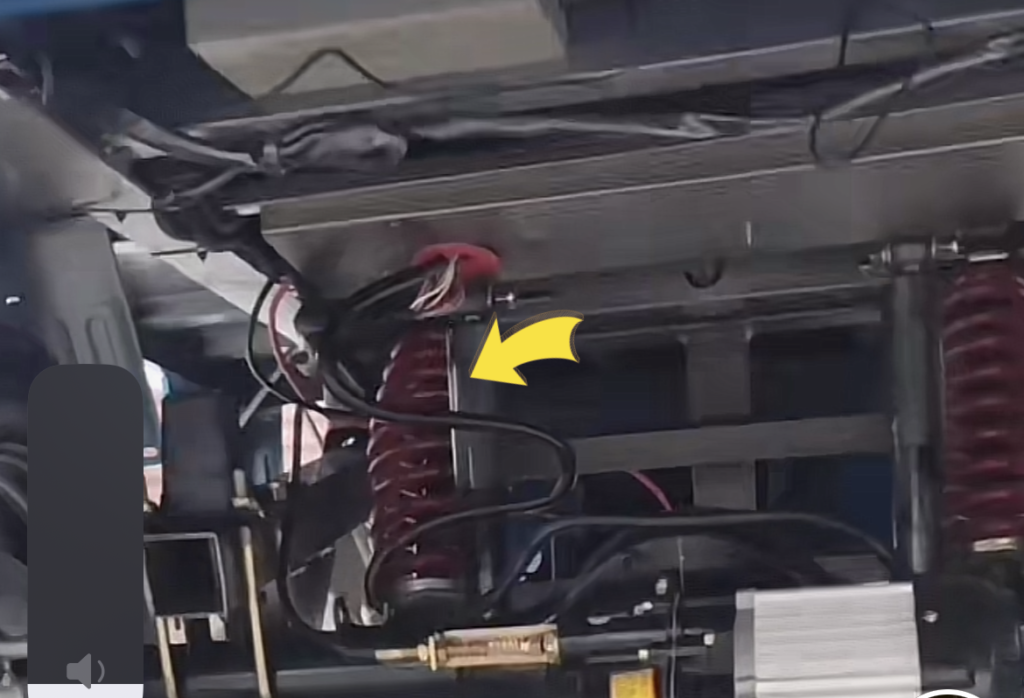
ในการเป็นพันธมิตรกับเราสำหรับความต้องการรถสามล้อไฟฟ้าของคุณคุณจะมั่นใจได้ว่าระบบกันสะเทือนคุณภาพสูงที่ให้ความทนทานความปลอดภัยและความสะดวกสบายในการขับขี่ที่เหนือกว่า มอบความต้องการความต้องการของคุณกับเราและสัมผัสกับบริการและความเชี่ยวชาญที่ไม่มีใครเทียบซึ่งทำให้เราแตกต่างในอุตสาหกรรมรถสามล้อไฟฟ้า
กรอบ - โครงสร้างของผู้โดยสาร
การเลือกใช้วัสดุ
กรอบพลาสติก (พร้อมฐานโลหะ) e-rickshaw
- ความนิยมที่เพิ่มขึ้น: สิ่งเหล่านี้ได้รับความนิยมเพิ่มมากขึ้นในช่วงไม่กี่ปีที่ผ่านมา
- การก่อสร้าง: ประกอบด้วยโครงท่อเหล็กห่อหุ้มด้วยตัวพลาสติกหนาและฐานโลหะ
- รูปร่าง: มีสไตล์มากขึ้นด้วยการออกแบบที่หลากหลาย
- ความยืดหยุ่นในการออกแบบ: ความอ่อนไหวของพลาสติกช่วยให้ผู้ผลิตแนะนำหลายรุ่นทุกปีซึ่งเป็นเรื่องยากที่จะประสบความสำเร็จด้วยเปลือกเหล็ก
- อายุการใช้งานแบตเตอรี่: เบาขึ้นเนื่องจากการใช้พลาสติกนำไปสู่การใช้พลังงานน้อยลงและอายุการใช้งานแบตเตอรี่ที่ยาวนานขึ้น
- ปลอบโยน: นำเสนอฉนวนที่ดีกว่าจากอุณหภูมิภายนอกนำไปสู่การขับขี่ที่สะดวกสบายยิ่งขึ้น
- ความทนทานในสภาพที่รุนแรง: ไม่ต้องเผชิญกับปัญหาการเกิดสนิมของเหล็ก อย่างไรก็ตามพลาสติกคุณภาพต่ำสามารถเสื่อมสภาพภายใต้แสงแดดที่รุนแรง
- ราคา: โดยทั่วไปจะมีราคาถูกกว่า E-Rickshaws เหล็กเนื่องจากการใช้เหล็กลดลง อย่างไรก็ตามบางรุ่นใหม่ที่ได้รับความสวยงามที่เหนือกว่าของพวกเขาอาจมีราคาสูงขึ้นโดยเฉพาะอย่างยิ่งหากพวกเขามีการตกแต่งภายในและอุปกรณ์เสริมที่ดีขึ้น
เปลือกเหล็กอิฐ
- ความสำคัญทางประวัติศาสตร์: เหล็กกล้าเหล็กกล้ามีประวัติอันยาวนาน
- การก่อสร้าง: มีร่างกายที่เป็นโลหะแบบครบวงจรเพื่อให้มั่นใจว่ามีความแข็งแรงของเฟรมสูง
- ความปลอดภัย: โดยทั่วไปให้ความปลอดภัยที่ดีขึ้นเนื่องจากความแข็งแกร่ง
- การนำอุณหภูมิ: โลหะดำเนินการอุณหภูมิได้อย่างมีประสิทธิภาพมากขึ้นซึ่งหมายความว่าการตกแต่งภายในสามารถเย็นในฤดูหนาวหรือร้อนในฤดูร้อน
- ความทนทานในภูมิภาคที่ชื้น: ในพื้นที่ฝนตกและชื้นเปลือกเหล็กสามารถเกิดสนิมและกัดกร่อนได้
- ความแข็งแกร่งของร่างกาย: ในการชนกันเล็กน้อยหรือรอยขีดข่วนเปลือกเหล็กสามล้อมีการป้องกันที่ดีขึ้น อย่างไรก็ตามในผลกระทบที่สำคัญความแตกต่างระหว่างเหล็กและเปลือกพลาสติกอาจไม่สำคัญ
- ราคา: ในขณะที่เหล็กกล้า E-rickshaws สามารถใช้จ่ายได้เนื่องจากราคาเหล็กสูง แต่เฟรมพลาสติกบางรุ่นอาจมีราคาแพงกว่าเนื่องจากความสวยงามที่เพิ่มขึ้นและการตกแต่งภายในระดับสูง
ยกระดับ e-rickshaw ของคุณ: คุณสมบัติส่วนบุคคล & ส่วนเสริม
รถสามล้อโดยผู้โดยสารไม่ได้เกี่ยวกับการขนส่งสินค้า - พวกเขาเกี่ยวกับผู้คน การนั่งทุกครั้งควรเป็นการผสมผสานระหว่างความสะดวกสบายสำหรับผู้โดยสารและประสบการณ์การขับขี่ที่ราบรื่นสำหรับผู้ให้บริการ นั่นเป็นเหตุผลที่เรานำเสนอตัวเลือกการปรับแต่งมากมายเพื่อให้มั่นใจว่าการเดินทางแต่ละครั้งนั้นราบรื่นสนุกสนานและปรับให้เข้ากับความชอบของแต่ละบุคคล
มือจับกับการควบคุมพวงมาลัย-
การควบคุมมือจับ:
- ข้อดี: ความคล่องแคล่วพิเศษบนถนนที่แน่นและตอบสนองอย่างรวดเร็วในสิ่งที่ตรงกันข้าม
- จุดด้อย: เสถียรภาพน้อยลงด้วยความเร็วที่สูงขึ้นในระหว่างการเลี้ยว
การควบคุมพวงมาลัย:
- ข้อดี: ให้การหมุนที่มั่นคงและรักษาทิศทางแม้ในภูมิประเทศที่ขรุขระโดยไม่ไหว
- จุดด้อย: กลไกการบังคับเลี้ยวสามารถสวมใส่ได้เมื่อเวลาผ่านไปต้องมีการบำรุงรักษา
กันชนด้านหน้าและด้านหลัง: เพิ่มความปลอดภัยและความสวยงามให้กับ e-rickshaw ของคุณด้วยกันชนหน้าและกันชนด้านหลังที่ทนทาน
แร็ควางสัมภาระบนหลังคา & สปอตไลท์: เพิ่มพื้นที่จัดเก็บสูงสุดด้วยชั้นวางกระเป๋าหลังคาที่แข็งแกร่ง สำหรับการปฏิบัติการตอนกลางคืนหรือการผจญภัยออฟโรดให้พิจารณาเพิ่มสปอตไลท์เพื่อส่องสว่างเส้นทางของคุณ
กล้องมองหลัง: ตรวจสอบให้แน่ใจว่าปลอดภัยขึ้นและจอดรถด้วยกล้องมองหลังความละเอียดสูงซึ่งให้มุมมองที่ชัดเจนเกี่ยวกับอุปสรรคใด ๆ ที่อยู่ด้านหลัง
- โหมดการปีนเขา (ไม่บังคับ):หากคุณเดินทางไปบนเนินเขาบ่อยครั้งมันสามารถให้พลังงานสามล้อมากขึ้นเมื่อปีนเขา
การขี่พลังงานแสงอาทิตย์: ควบคุมดวงอาทิตย์สำหรับการเดินทางขยาย
เพิ่มประสิทธิภาพรถลากไฟฟ้าของคุณด้วยแผงโซลาร์เซลล์บนดาดฟ้า สายรัดพลังงานแสงอาทิตย์สำหรับการชาร์จอย่างต่อเนื่องทำให้มั่นใจได้ว่าการขี่ที่ยาวนานขึ้นและประสิทธิภาพที่เป็นมิตรกับสิ่งแวดล้อม
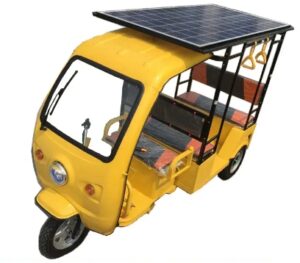
สำรวจอาร์เรย์ของตัวเลือกการปรับแต่งเพิ่มเติมที่เหมาะกับคุณ ที่ AGL-Trike เรายอมรับความต้องการเฉพาะของคุณนำเสนอการเลือกที่กว้างขวางเกินมาตรฐานเพื่อสร้างสามล้อที่สะท้อนกับสไตล์และการตั้งค่าการทำงานของคุณ สนใจที่จะเรียนรู้เพิ่มเติม? เข้าถึง AGL-Trike และเริ่มดำเนินการในการออกแบบการออกแบบตามความต้องการนี้ด้วยกัน
ระบบเบรก แนะนำ รถสามล้อไฟฟ้า
การเลือกประเภทเบรก
เบรกกลอง
ลักษณะเฉพาะ:
- เป็นมิตรกับงบประมาณ: การผลิตและบำรุงรักษาเบรกกลองมักจะมีค่าใช้จ่ายน้อยกว่า
- การหยุดที่มีประสิทธิภาพ: ออกแบบมาเพื่อส่งมอบกำลังเบรกเด่นชัดในบางสถานการณ์
- แอปพลิเคชันทั่วไป: ใช้งานส่วนใหญ่ในยานพาหนะที่มีน้ำหนักมากเช่นรถสามล้อเพื่อให้แน่ใจว่ามีการเบรกที่มีประสิทธิภาพ
ข้อ จำกัด :
- พวกเขาขาดการกระจายความร้อนเมื่อเทียบกับดิสก์เบรกเพิ่มความเสี่ยงของความร้อนสูงเกินไป
- มีความเป็นไปได้ที่จะล่าช้าเล็กน้อยในเวลาตอบสนอง
ดิสก์เบรก
ลักษณะเฉพาะ:
- การกระจายความร้อนที่มีประสิทธิภาพ: ดิสก์เบรกโดดเด่นในความสามารถในการกระจายความร้อนซึ่งช่วยในการระบายความร้อนอย่างรวดเร็วและลดความกังวลความร้อนสูงเกินไป การบำรุงรักษาระยะยาวของพวกเขาอาจสร้างความสมดุลให้กับการลงทุนครั้งแรก
- การเบรกล่วงหน้า: สร้างความมั่นใจให้กับกองกำลังหยุดที่สอดคล้องกันและทันที
- แอพพลิเคชั่นในอุดมคติ: ด้วยการจัดการความร้อนและความรวดเร็วที่เหนือกว่าของพวกเขาจะมีการเลือกดิสก์เบรกสำหรับยานพาหนะที่ต้องการเบรกประสิทธิภาพสูง
ข้อ จำกัด :
- ค่าใช้จ่ายล่วงหน้าสามารถอยู่ด้านที่สูงขึ้น
- อาจจำเป็นต้องมีการตรวจสอบการบำรุงรักษาที่สอดคล้องกันมากขึ้น
แอปพลิเคชันและการจับคู่มาตรฐานของเบรก
ในขอบเขตของรถตักสามล้อไฟฟ้าเบรกกลองมักจะต้องการและนี่คือเหตุผล:
เป็นมิตรกับงบประมาณ: สัมพันธ์กับเบรกประเภทอื่น ๆ Drum Brakes เสนอกระบวนการผลิตที่ประหยัดต้นทุนมากขึ้น ข้อได้เปรียบด้านราคานี้สะท้อนกับทั้งผู้ผลิตและผู้บริโภคในตลาดที่ให้ผลตอบแทนสูงจากการลงทุน
ความอดทนด้วยการดูแลง่าย: ความเรียบง่ายและความทนทานของเบรกกลองแปลเป็นความยุ่งยากในการบำรุงรักษาน้อยลงและช่วงเวลาที่ยาวนานขึ้นระหว่างการเปลี่ยน สิ่งนี้ทำให้มั่นใจได้ว่าการทำงานอย่างต่อเนื่องและราบรื่นสำหรับรถตักสามล้อไฟฟ้า
ความเหมาะสม: ออกแบบมาเพื่อรองรับแรงบิดเบรกที่สูงขึ้นดรัมเบรกสอดคล้องกับข้อกำหนดของรถตักสามล้อไฟฟ้าที่มักจะจัดการกับสินค้าที่มีน้ำหนัก
มีตัวเลือกการกำหนดค่าเบรกต่าง ๆ ดังนี้:
สรุป: ทั้งสามล้อมีการติดตั้งเบรกกลอง
ประโยชน์: ดรัมเบรกให้ประสิทธิภาพที่ดีขึ้นในสภาพเช่นน้ำและโคลนเมื่อเทียบกับดิสก์เบรกรับประกันประสิทธิภาพที่มั่นคงในภูมิประเทศที่แตกต่างกัน พวกเขามีแนวโน้มที่จะประหยัดกว่าและต้องการการบำรุงรักษาน้อยกว่า
เหมาะที่สุดสำหรับ: ผู้ขับขี่ที่ให้ความสำคัญกับการเบรกที่สอดคล้องกันในสภาพแวดล้อมและเงื่อนไขที่หลากหลายโดยไม่จำเป็นต้องหยุดอย่างรวดเร็วและมีพลัง
2. แผ่นดิสก์ด้านหน้า & การตั้งค่าเบรกดรัมด้านหลัง-
สรุป: ล้อหน้าติดตั้งดิสก์เบรกในขณะที่ล้อหลังใช้เบรกกลอง
ประโยชน์: มิกซ์นี้ให้การตอบสนองทันทีของดิสก์เบรกด้านหน้าควบคู่ไปกับประสิทธิภาพที่เชื่อถือได้ของเบรกกลองด้านหลัง มันบรรลุความสมดุลระหว่างต้นทุนและพลังงานหยุดที่เพิ่มขึ้นที่ด้านหน้า
เหมาะที่สุดสำหรับ: ผู้ที่ตั้งเป้าหมายเพื่อความแม่นยำในการเบรกที่อยู่ด้านหน้า แต่ต้องการรักษาความน่าเชื่อถือของเบรกกลองด้านหลัง
3. การกำหนดค่าดิสก์เบรกทุกล้อ-
สรุป: ดิสก์เบรกติดตั้งบนทั้งสามล้อ
ประโยชน์: ดิสก์เบรกส่งมอบความสามารถในการหยุดที่เหนือกว่าและการกระจายความร้อนที่มีประสิทธิภาพโดยเฉพาะอย่างยิ่งในช่วงที่ต้องการช่วงเวลาการเบรก พวกเขามั่นใจว่าการเบรกอย่างต่อเนื่องในสภาพที่หลากหลายและมีเวลาตอบสนอง Swifter
เหมาะที่สุดสำหรับ: ผู้ที่ชื่นชอบการต้องการประสิทธิภาพการเบรกสูงสุดโดยเฉพาะอย่างยิ่งในสถานการณ์ที่ต้องหยุดอย่างรวดเร็วหรือเมื่อนำทางภูมิประเทศลงเขา
เลือก Alg Trike ซึ่งเป็นหนึ่งในผู้ผลิตรถสามล้อไฟฟ้าชั้นนำสามารถมั่นใจได้ว่าการเบรกที่ปลอดภัยและมั่นคง แต่ยังรองรับความต้องการในการขับขี่และการโหลดที่หลากหลาย
ศูนย์กลางยางและล้อ สิ่งจำเป็น
การเลือกยางสำหรับรถลากไฟฟ้า 3 ล้อ
ขนาดยาง: ตัวอย่างเช่นหากพารามิเตอร์ยางเป็น “3.0-12”, ที่ไหน “3.0” แสดงถึงความกว้างของยางและ “12” ระบุเส้นผ่านศูนย์กลางด้านในของยาง โดยทั่วไปขนาดที่ใหญ่กว่าจะมีราคาแพงกว่า ตัวอย่างเช่นยาง 3.0-12 จะมีราคาแพงกว่ายาง 3.0-8
วัสดุยาง: ส่วนใหญ่มีสองประเภท: ยางเรเดียล และ ยางอคติยางเรเดียลเนื่องจากความแข็งแรงของพวกเขาแสดงความทนทานที่เหนือกว่าโดยเฉพาะอย่างยิ่งภายใต้ภาระหนักและการขับขี่ทางไกล หากการขี่สบายคือความชอบยางอคติจะเพียงพอ
การจัดอันดับยางรถ: ข้อกำหนดทั่วไป ได้แก่ 4PR, 6PR, 8PR การจัดอันดับเหล่านี้แสดงถึงความสามารถในการรับน้ำหนักของยาง ยิ่งจำนวน Ply มากเท่าไหร่ก็ยิ่งมีความสามารถในการรับน้ำหนักมากขึ้นเท่านั้น
รูปร่างยาง: ยางส่วนใหญ่มาในสองรูปร่าง: แบนบนและโค้ง ยางแบนด้านบนมีความหนาและทนต่อการสึกหรอได้มากขึ้นเหมาะสำหรับการรับน้ำหนักที่ใหญ่ขึ้น ในขณะที่ยางโค้งให้ประสบการณ์การขี่ที่มั่นคงยิ่งขึ้น ดังนั้นบางล้อบางล้ออาจเลือกใช้ยางโค้งที่ด้านหน้าและยางแบนด้านหลัง
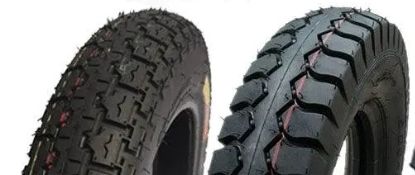
วัสดุฮับล้อ
ฮับล้ออัลลอยอลูมิเนียม: อลูมิเนียมอัลลอยด์เป็นที่นิยมสำหรับน้ำหนักเบามีความแข็งแรงสูงและต้านทานการกัดกร่อนที่ดี มันสามารถให้การกระจายความร้อนที่ดีขึ้นช่วยลดความร้อนของเบรกและเสนอการลดน้ำหนักในระดับหนึ่งสำหรับยานพาหนะ
ศูนย์กลางล้อเหล็ก: เหล็กเป็นวัสดุที่หนักกว่า แต่แข็งแรงและทนทานมาก โดยทั่วไปแล้วฮับล้อประเภทนี้มักจะมีค่าใช้จ่ายน้อยกว่าน้ำหนักที่หนักกว่าอาจเสียสละประสิทธิภาพเล็กน้อย
ยางเป็นจุดเดียวของการสัมผัสระหว่างรถสามล้อไฟฟ้าและพื้นดินทำให้ทางเลือกของยางที่เหมาะสมมีความสำคัญ สำหรับถนนที่ราบรื่นเราขอแนะนำให้เลือกยางที่มีความต้านทานต่อการกลิ้งต่ำและองค์ประกอบที่นุ่มนวลให้ความสะดวกสบายและประสิทธิภาพการใช้พลังงานที่ดีขึ้น บนภูมิประเทศที่ขรุขระหรือโคลนควรเลือกยางที่มีดอกยางลึกเพื่อให้แน่ใจว่ามีแรงฉุดที่ดี
การขนส่งบรรจุภัณฑ์ที่ AGL-Trike
บรรจุภัณฑ์ส่งมอบยานพาหนะ
ที่ AGL-Trike ในฐานะผู้ผลิตรถสามล้อในประเทศจีนเราภูมิใจในความสนใจของเราในรายละเอียดและความมุ่งมั่นของเราที่มีคุณภาพสูงสุดในทุกด้านตรงกับบรรจุภัณฑ์ของเรา เพื่อให้ลูกค้าของเรามีความเข้าใจในการมองเห็นความเป็นมืออาชีพของเราเราจะแสดงวิธีการจัดส่งแบบเต็มรถยนต์มาตรฐานหลายวิธี วิธีการของเราช่วยให้มั่นใจได้ถึงความปลอดภัยและการป้องกันสูงสุดสำหรับผลิตภัณฑ์ทำให้มั่นใจได้ว่าจะมาถึงคุณในสภาพที่เก่าแก่
บรรจุภัณฑ์ฟองน้ำมาตรฐานพื้นฐาน
บรรจุภัณฑ์กรอบไม้
บรรจุภัณฑ์เฟรมโลหะ
- กรอบโลหะที่มีบรรจุภัณฑ์ลังไม้

ตัวเลือกบรรจุภัณฑ์ที่กำหนดเองเพิ่มเติม
การทำความเข้าใจว่าลูกค้าแต่ละรายอาจมีความต้องการและความชอบเฉพาะเมื่อพูดถึงการขนส่งและการประกอบเรามีตัวเลือกบรรจุภัณฑ์ที่หลากหลาย:
SKD (กึ่งล้มลง): วิธีบรรจุภัณฑ์นี้เกี่ยวข้องกับการประกอบบางส่วน ส่วนประกอบที่สำคัญมีการบรรจุแยกต่างหากนำเสนอความสมดุลระหว่างความสะดวกในการขนส่งและความพยายามในการประกอบที่ลดลงที่ปลายทาง
CBU (สร้างขึ้นอย่างสมบูรณ์): ยานพาหนะประกอบขึ้นอย่างเต็มที่และพร้อมสำหรับการใช้งานทันทีเมื่อเดินทางมาถึง วิธีนี้เหมาะสำหรับลูกค้าที่ต้องการโซลูชันแบบปลั๊กแอนด์เพลย์โดยไม่จำเป็นต้องมีชุดประกอบหลังการจัดส่ง
CKD (ล้มลงอย่างสมบูรณ์): สิ่งนี้เกี่ยวข้องกับการถอดชิ้นส่วนที่สมบูรณ์ของยานพาหนะ แต่ละส่วนประกอบได้รับการบรรจุอย่างปลอดภัยเป็นรายบุคคลทำให้มั่นใจได้ว่ามีความกะทัดรัดและประสิทธิภาพในระหว่างการขนส่ง วิธีนี้เหมาะสำหรับจุดหมายปลายทางที่มีกฎระเบียบการนำเข้าเฉพาะหรือสำหรับลูกค้าที่มีความสามารถในการประกอบพิเศษภายใน บริษัท
ด้วยการนำเสนอตัวเลือกบรรจุภัณฑ์ที่หลากหลายเหล่านี้เรามั่นใจได้ว่าลูกค้าของเราสามารถเลือกวิธีการที่สอดคล้องกับโลจิสติกส์ความสามารถในการประกอบและการตั้งค่า เป้าหมายของเราที่ AGL-Trike คือการทำให้ทุกแง่มุมของการซื้อของคุณรวมถึงการขนส่งและบรรจุภัณฑ์ที่ราบรื่นและปรับให้เหมาะสมที่สุด
คำถามที่พบบ่อย เกี่ยวกับการค้าส่งและการปรับแต่งของสินค้าไฟฟ้า
MOQ ของคำสั่งคืออะไร?
สำหรับค่าจัดส่งที่ดีที่สุดเราแนะนำให้เติมภาชนะ 20GP อย่างไรก็ตามคำสั่งซื้อที่ไม่ได้เติมภาชนะจะได้รับการยอมรับด้วยบันทึกต้นทุนการจัดส่งที่สูงขึ้น ผสมผสานรูปแบบรถสามล้อที่แตกต่างกัน 1-2 ในภาชนะเดียวเพื่อความหลากหลายและประสิทธิภาพด้านต้นทุน
ตรวจสอบให้แน่ใจว่าคุณได้รับสิ่งที่ดีที่สุดในการจัดส่งราคาและความหลากหลายด้วย MOQ ที่ยืดหยุ่นและตัวเลือกการจัดส่งที่ยืดหยุ่นของเรา
เวลานำที่คาดหวังคืออะไร?
สำหรับรุ่นมาตรฐานคาดว่าจะมีเวลานำ 15-25 วัน สำหรับคำสั่งซื้อที่กำหนดเองพิเศษเวลาการจัดส่งจะถูกประเมินตามข้อกำหนดเฉพาะของคุณเพื่อให้มั่นใจว่าคุณจะรู้ว่าเมื่อใดที่จะคาดหวังคำสั่งซื้อของคุณและสามารถวางแผนได้
ระยะเวลาการรับประกันสำหรับรถสามล้อไฟฟ้าของคุณคืออะไร?
เราเสนอการรับประกัน 1 ปีสำหรับรถสามล้อไฟฟ้าของเราครอบคลุมความเสียหายที่ไม่ใช่มนุษย์ มั่นใจได้ว่าเรายืนอยู่เบื้องหลังคุณภาพและความทนทานของผลิตภัณฑ์ของเราให้การสนับสนุนหลังการซื้อที่เชื่อถือได้
คุณจัดส่งในระดับสากลหรือไม่?
ใช่เราจัดส่งรถสามล้อไฟฟ้าของเราทั่วโลกกับพันธมิตรโลจิสติกส์ที่เชื่อถือได้
รถสามล้อไฟฟ้าของคุณได้รับการรับรองและสอดคล้องกับมาตรฐานสากลหรือไม่?
อย่างแน่นอนสามล้อของเราเป็นไปตามมาตรฐานความปลอดภัยและคุณภาพระหว่างประเทศเพื่อให้มั่นใจถึงความน่าเชื่อถือและความปลอดภัยสำหรับลูกค้าของเราทุกคน
บริการหลังการขายเป็นอย่างไร?
เราให้บริการหลังการขายที่ครอบคลุมรวมถึงการจัดหาชิ้นส่วนอะไหล่การสนับสนุนทางเทคนิคและความช่วยเหลืออื่น ๆ เพื่อให้แน่ใจว่าการทำงานของรถสามล้อไฟฟ้าของคุณราบรื่น
คิกสตาร์ท โครงการของคุณ ตอนนี้!
มีโครงการอยู่ในใจหรือมีคำถามที่จะถาม?
อย่ารอช้า! ทีมงานของเราพร้อมที่จะช่วยเหลือ
เรามุ่งมั่นที่จะตอบกลับภายใน 12 ชั่วโมง
- +86 18367809612 (วอทส์แอพ)
- info@agl-trike.com
เราจะติดต่อคุณภายใน 12 ชั่วโมง โปรดใส่ใจกับอีเมลที่มีส่วนต่อท้าย “@agl-trike.com”.



